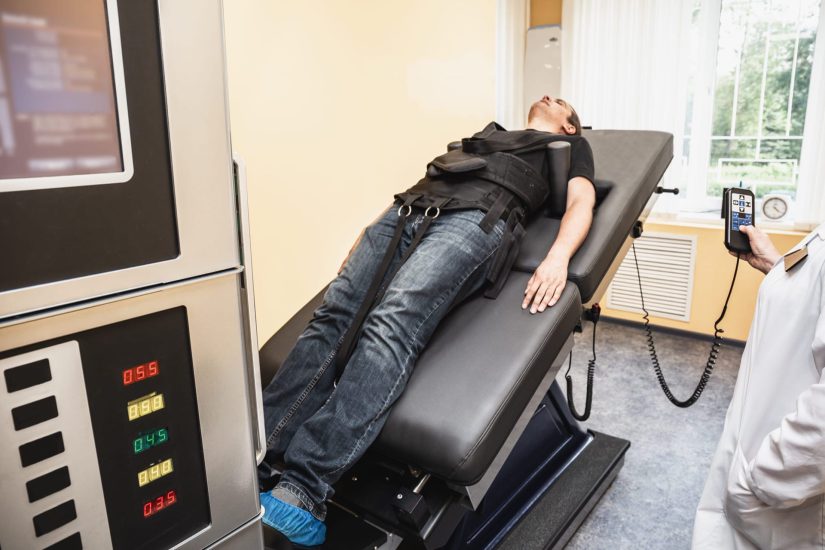Disc Decompression
Chronic back pain can be debilitating for both your mood and productivity, creating constant stress and discomfort. While there are a broad number of therapies used to treat back pain, disc decompression is known to have a high success rate. When used in combination with other treatments, they have far better results than when used without this modality. Disc decompression is a surgery that may not be for everyone, which is why you should speak with an educated doctor who can help inform you of how the process works. You can work with a cutting-edge facility that offers not only pain management but alsoorthopedics and top-of-the-line neurosurgery. Call Ceda Orthopedic Group to learn how to get started.
What Is Disc Decompression?
Disc decompression is also known as percutaneous discectomy and is a minimally invasive procedure that is utilized by physicians to treat noticeable pain in the intervertebral disc within the spine. Doctors who are trained and specialize in spinal surgery apply a far less invasive approach than that of a discectomy or laminectomy. It removes pressure from the neck and lower back by releasing tension from the nerve roots. The back, neck, leg, and arm pain often stems from damaged or degenerating discs. This treatment approach is now cleared by the FDA for back pain and herniated discs.
What Does Disc Decompression Treat?

Disc decompression can treat symptoms of back pain caused by the following:
Herniated Discs
Herniated discs are also known as ruptured or slipped discs. They occur when a part of the disc nucleus slips out of the annulus. The disc nucleus pushes into the spinal canal due to a tear in the annulus. Herniated discs are often a sign of degeneration.
Pinched Nerves
This is a type of damage or injury to one nerve or more. Pinched nerves happen when the surrounding tissue presses on the nerve roots, causing pain, tingling, or numbness.
Bulging Discs
While not as painful as a herniated disk, a bulging disk occurs when the disc nucleus slips out of place but hasn’t completely slipped beyond the annulus. It can cause numbness in the legs and a weak bladder.
Sciatica
This is nerve pain that is caused by the compression of the sciatic nerve. The sciatic nerve is found in the lower back and stretches across the buttocks and down the leg. When the nerve is compressed due to tissue pressure, there can be radiating pain.
Spinal Stenosis
Spinal stenosis happens when a spinal nerve or cord is compressed for a long time. There can be temporary symptoms and long-term consequences. For example, permanent paralysis and numbness can occur if this condition goes untreated.
Degenerative Discs
A spinal disc can get worn down through old age or wear-and-tear. Lifestyle, health, and injuries can greatly impact degenerative disc disease. Typically there is a predisposition for degenerative disc disease, as an injury alone can’t cause it to happen.
Post-Surgical Pain
Post-surgical pain is when your body hurts for more than three to six months after surgery has occurred. It can range from soreness to severe pain and is often caused by a surgical injury.
How Can Disc Decompression Help Me?
Disc decompression is a form of motorized traction that helps to relieve back pain. This therapy gently stretches the spine in simple motions to release any tension and pressure from the spinal discs. Through stretching, a small vacuum is created in the spinal discs that are being treated. Because of the negative pressure, herniated and bulging discs improve and can help reduce recovery time. Disc decompression also allows nutrients to reach the disc more easily, helping to increase healing.
Would I Be A Good Candidate for Disc Decompression?
Disc decompression should be applied to patients who feel radicular pain that spreads along the spinal nerve root. This pain can spread from the spine to the lower back, arms, legs, and neck. Pain in the cervical and thoracic discs across the neck and mid-back can be treated using disc decompression. Patients that have small or minimal disc herniation would be better candidates than those that have much larger herniations, which might require a more invasive procedure.
Also, if there are no disc fragments and no disc space narrowing, then this would also be eligible for treatment. Before treatment, the patient must be sure that the discs are the main source of their pain, otherwise, disc decompression wouldn’t be a useful treatment. You can speak with a doctor to make sure that you are a good candidate for decompression. If you need a diagnosis, an MRI scan can be used to identify whether the spinal discs are causing the problem and whether there are one or more discs that are affected.
How Does The Disc Decompression Protocol Work?
When spinal decompression is initiated, the position of the spine is changed and the force applied to the spinal column is reduced. The spinal discs are gel-like tissues that cushion the spinal bones. Disc decompression helps create negative pressure to ease the pain caused by herniated, bulging, or ruptured discs. This expedites healing and helps create long-term relief through a series of treatments. There are different types of disc decompression therapy. This includes laminotomy, laminectomy, laminoplasty, foraminotomy, and discectomy. You can speak with a doctor to discover which type of therapy is right for you.
Get Quality Care For Disc Decompression
If you are struggling with severe pain in your back, neck, arms, or legs, you can consider disc decompression as a treatment. This is especially the case if your leg pain is worse than your back pain and doesn’t improve if you use physical therapy or pain killers. Don’t allow spinal pain to continue, resulting in the reduced ability to walk or maneuver. You can speak with experienced physicians who can perform a diagnostic test to check what is the cause of your pain. Contact Ceda Orthopedic Group to learn more.
